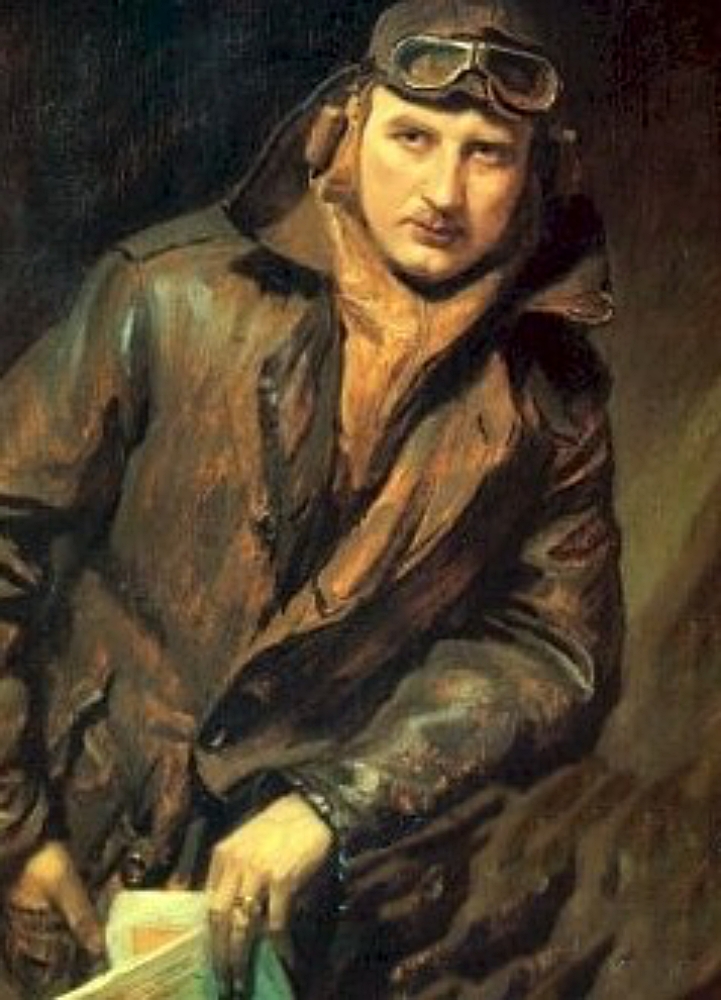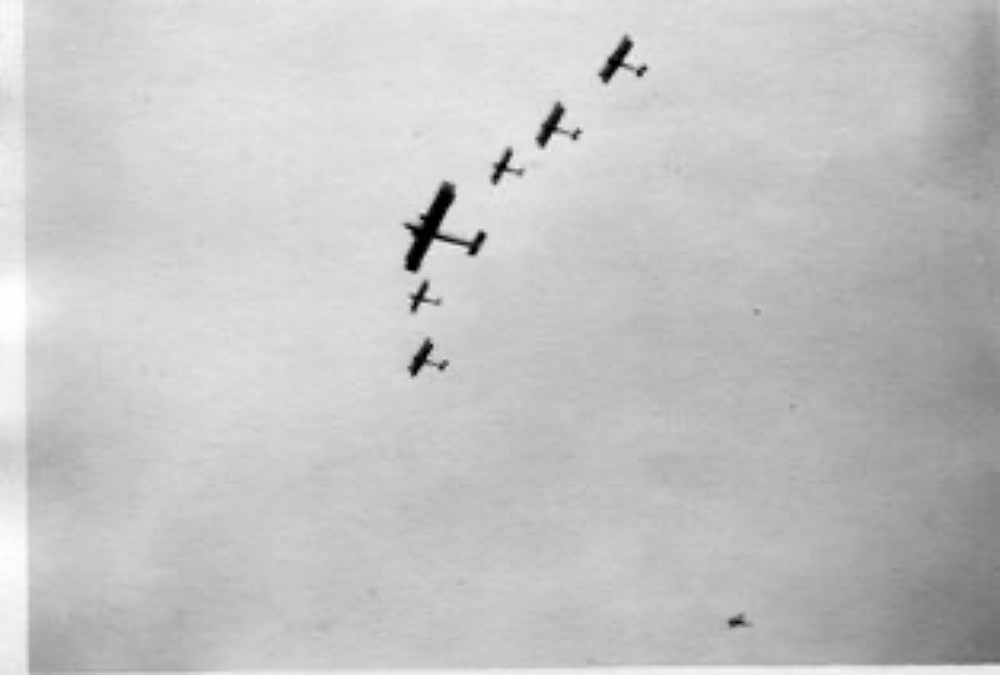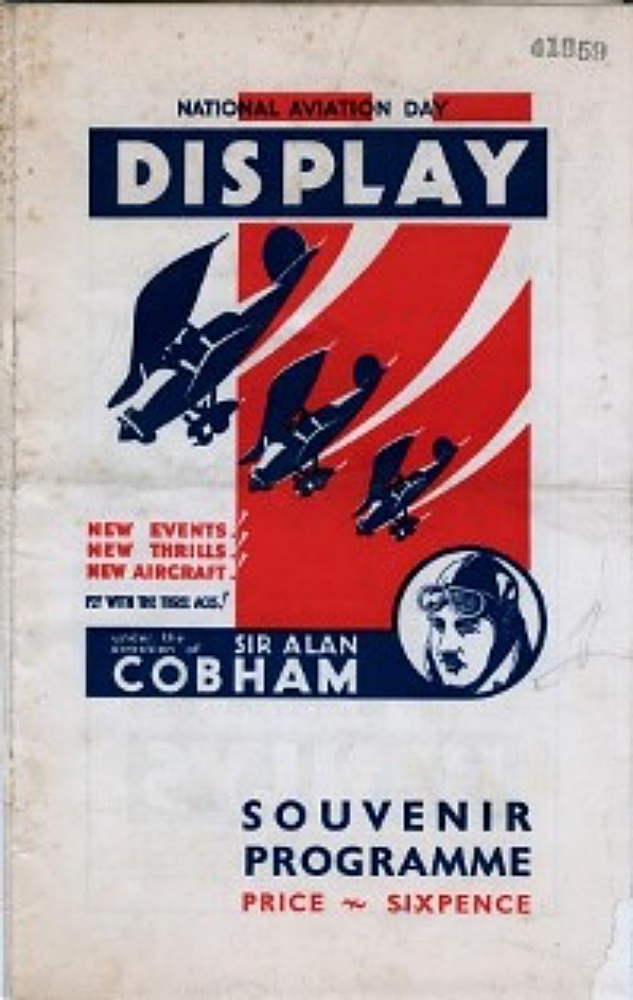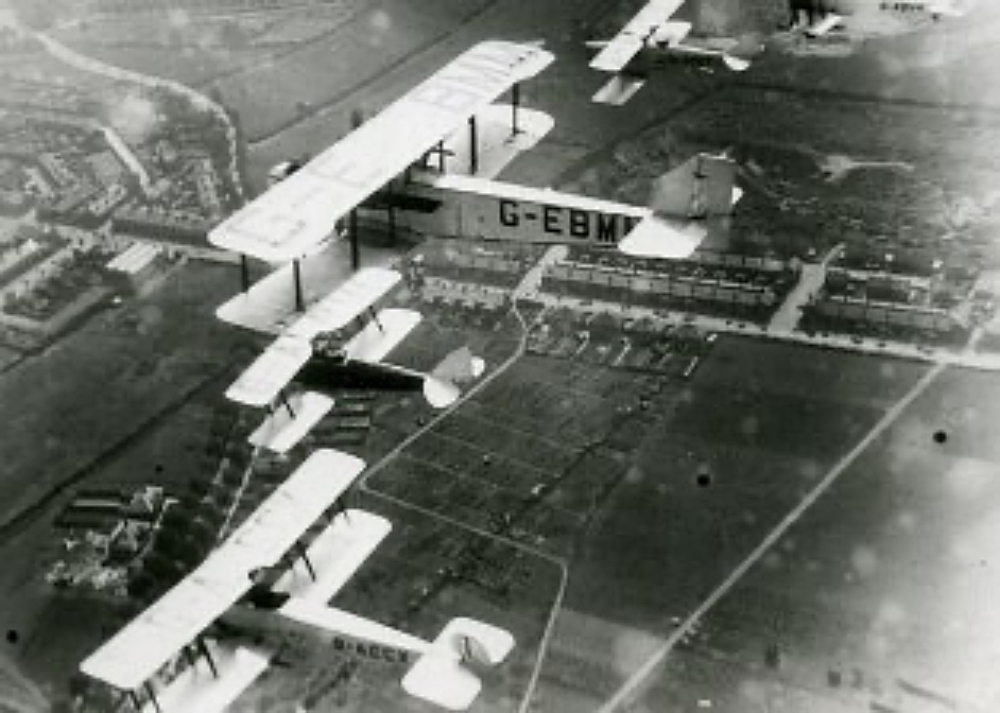Sir Alan Cobham flying circus
BEFORE Alan John Cobham, the British public thought of civilian flying as the sole province of senior political figures, millionaires, explorers and adventurers. It took 15 years after his World War One service in the Royal Flying Corps for Cobham to change this view irrevocably.

In that time, the intrepid flier undertook increasingly remarkable long-distance flights. First, he flew 5,000 miles around Europe, followed in quick succession by an 8,000-mile flight across Europe to North Africa, 12,000 miles through Europe to Palestine, Egypt, the North African coast and back through Spain, and topped that with a flight to South Africa and back. Little wonder that when as Sir Alan Cobham arrived in West Sussex in 1933 with his “Flying Circus”, thousands of spectators turned out to greet one of the most popular aviators of all time.
BY May, 1933, Sir Alan Cobham was the toast of the aviation world. Having left military service soon after World War One, he had pioneered many long-distance flights during the 1920s and early ’30s and made Britain air-minded as he began to tour Britain with his aerial “circus”.
Now it was the turn of the old aerodrome at Thakeham, near Storrington, to host the intrepid aviator.
Private flying was relatively a free-for-all in these days. Not free, as in paying, but free from much of the regulation that accompanies it today.
The week before Sir Alan’s visit, when he was to give a flying display to publicise his National Aviation Day Crusade, the Worthing Gazette announced a special competition.
On May 13, a high-speed single-seat biplane fighter “of a type until recently used by the crack fighter squadrons of the Royal Air Force”, would fly over Ashington, Coolham, Findon, Pulborough, Steyning, Storrington, Thakeham, Wiston, Washington and West Chiltington.

The aeroplane would be readily recognised by its yellow colouring and the roar of its 560-horsepower supercharged Siddeley engine.
The pilot would give a thrilling display of advanced aerobatics at various points as a foretaste of the general display by Cobham’s flying circus on the following Friday. Over each village the aeroplane would fire two red Verey lights.
Readers were invited to estimate the height at which the aeroplane was flying when the Verey lights were fired.
Twelve 10-shilling tickets entitling holders to free admission to the display on May 19, plus a 25-mile cruise in an airliner during the display, would be awarded to those who estimated the height correctly.
Never before – or since – have the country roads around Thakeham seen so much traffic on them in one day. Thousands of people in cars, coaches, on bicycles and on foot flocked to the Old Aerodrome to witness the air display promised by Sir Alan.

The journey was certainly not wasted. Those present were treated to a day of thrills they would remember for the rest of their lives.
Most had never before seen upside-down flying, wing-walking and parachute descents and the greatest applause was accorded to Madame M. Meyer, who gave the most spectacular aerobatics of all and returned to earth more unconcerned than any who had watched her exploits from ground level.
“Chick” Parsons, who much later became circulation manager of the Herald and Gazette, was one of the local lads enthralled.
He recalled: “One of the events in the display involved picking up handkerchiefs from the field, by aircraft fitted with spiked struts below the wing tips.
“For the next few weeks, West Chiltington’s Church Street was full of speeding schoolboys on bikes with wire attached on to the pedals. We leaned over to pick up handkerchiefs strewn down the road.
“Other events I still recall are the aircraft flying through large football goal posts, the cutting up of toilet rolls by the aircraft propellers and an aerobatics display in an Avro Mongoose, which closed with a 300mph dive.

“We were also very impressed by a strange little aircraft known as the Flying Flea, which taxied but was not allowed to leave the ground because it did not have a Ministry of Aviation certificate to fly.”
Alan Cobham’s flying circus flew around Britain with the slogan, “Make the skyways Britain’s highways”. While he certainly popularised cheap flying more effectively than any before him, he did not achieve one of his other major objectives.
He wanted to defeat proposals, made in Geneva at the beginning of the 1930s, to place civil aviation “under the stranglehold of international control”. “By so doing,” he predicted, “would soon doom the flourishing industry to stagnation.”
He was convinced such a move “would lead to British aircraft constructors losing the leadership they had won and, furthermore, the employment of thousands of skilled workers would vanish”.
Thakeham’s day of glorious flying had been a resounding success but local aviation excitement for first-time flyers was only just beginning.
Cashing in on the excitement only a few weeks later, air pageants to raise money for British hospitals were held at Ford Aerodrome and Shoreham Aerodrome.
For those who like to compare with today’s entrance prices, tickets for these shows cost 1s.3d for adults, children sixpence.
The exciting bonus was the opportunity to fly – for just four shillings!